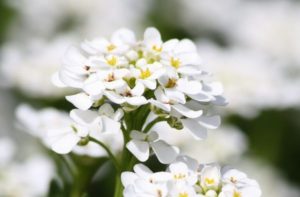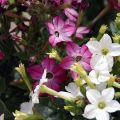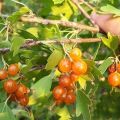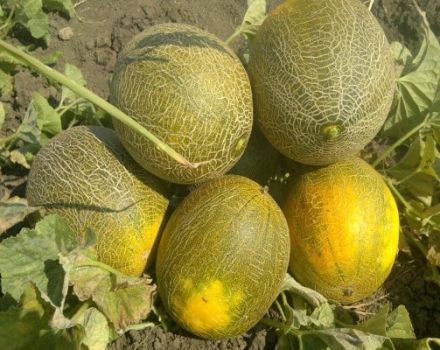Description of the variety Chistets or Stakhis Woolly, planting and care
Chistets or - Woolly stachis, is a herbal plant of the Clay family. The bush grows in coniferous and mixed forests, forest-steppe. It is widely bred in private areas for further use for medical purposes. The people call the chastets - hare, or sheep ears. So the culture gained reputation due to the whitish edge on the leaves. To grow the bushes safely, you need to familiarize yourself with all their features.
Description and features
The bush consists of leaves covered with dense pubescence along the entire back side. Sheep ears grow up to 100 cm high. The leaf plates are located oppositely, they are solid or serrated. Flowers are part of false whorls that form spike-shaped inflorescences. Their color is purple, yellow, lavender, pinkish or white.
The fruit is a triangular nut, ovoid or oblong in shape. The representative of the flora is unpretentious, can withstand even hot, dry days. The optimum temperature for a plant is 20-25 degrees Celsius. Cold weather is not terrible for the cleanets, under a thick layer of snow, he safely endures the winter. The annual bush is valued by beekeepers as a good honey plant.
Popular varieties
There are many varieties of chisel, nine of which are described below. Each species differs in size, color of flowers, foliage.
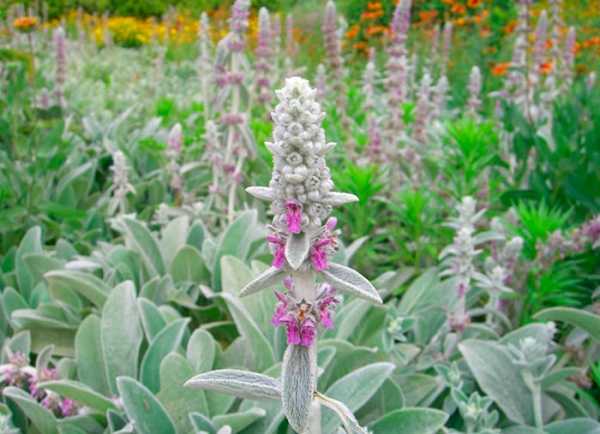
Big ears
The variety is a low-growing plant with branched shoots up to 25 cm high. The leaves are fleecy, soft, muted green color.
Silver Carpet
The chitose variety grows up to 15 cm in height. The bush resembles a solid silvery-gray carpet. The plant does not form flowers.
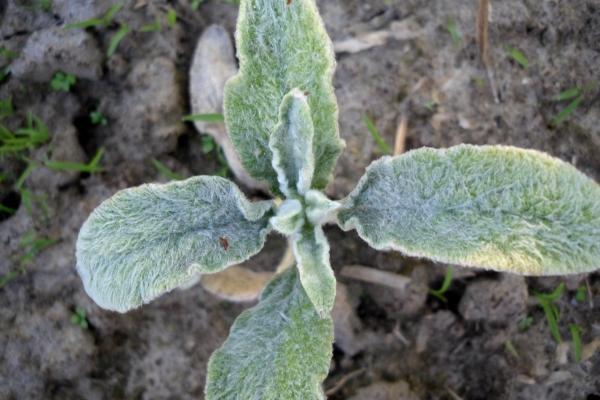
Striped phantom
The variety grows with whitish, longitudinal leaves. The flowers are rich yellow. The bush grows up to 20 cm high.
Cotton ball
Differs in the presence of white, longitudinal stripes along the entire length of the leaves. This is one of the best varieties of variegated chisel.
Sheila macqueen
The bushes are compact, reaching 15 cm high. The variety does not bloom, with dense planting, it creates a ground cover effect. The leaves are covered with gray pubescence.

Marvel
The plant reaches 50 cm in height. There are many small hairs on the foliage, the bush itself is thick.
Primrose heron
The variety is famous for its non-standard leaf color. They are yellow in the spring, but turn silvery green over time. The flowers grow pale pinkish.The height of the bush is 20 cm on average.
Silky fleece
The shrubs of the chitosene grow up to 25 cm tall, the flowers on them are purple. Leaves are densely pubescent, whitish-felt tone due to numerous villi.
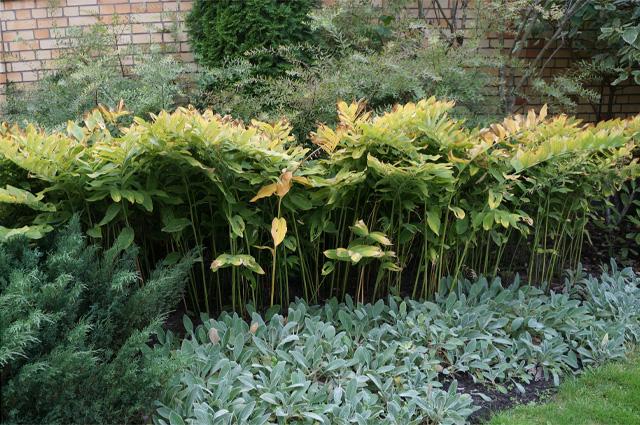
Byzantine
Chistets Byzantine is distinguished by highly branched, erect stems. The bush grows up to 60 cm tall. It blooms with delicate lavender, small inflorescences located in the bud.
Timing
You can prepare planting material from seeds in the end of February or beginning of March, using seedling soil mixture.
It is important that the soil warms up to 10 cm deep, the air temperature is above 0. The variety of the bush is frost-resistant, therefore, it is not necessary to wait for significant warming. Seedlings are shown in 1 month.
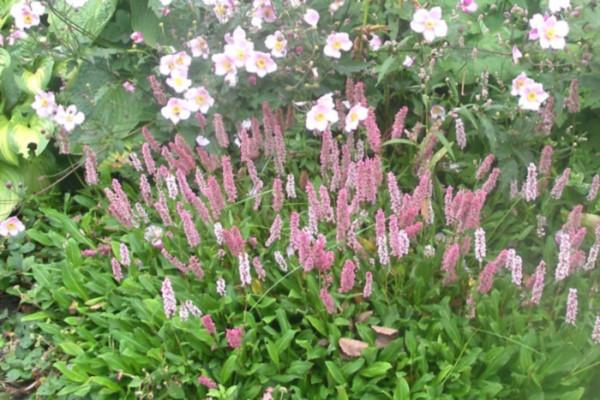
Seedlings are planted in a permanent place in mid-April and until early May. In the South, planting work can be postponed until autumn. It is important that the air temperature warms up at least +10 degrees.
Soil preparation
Sheep ears are unpretentious to the ground, they adapt well in its different types. It is advisable to plant the purse in light, loamy or rocky soil with a moderate degree of fertility. The alkaline reaction should be neutral. Excess mineral components negatively affect the appearance. The plant loses its silvery hue, becomes saturated green. Before planting, the earth is loosened into 2 bayonets of a shovel. If necessary, to lower the acidity, add additional lime or charcoal.

It is better to plant the purse in a well-lit place protected from drafts without stagnant groundwater. The bush can grow in lighted areas, or in partial shade.
Planting seedlings on seedlings
For regions with harsh winters, the method of planting a chisel in seedlings is suitable. Seeds are sown in boxes with moistened sand and peat soil, a little sprinkled with soil. After 5-10 days, the first shoots are formed.
Dive
It is not necessary to dive the seedlings of the chanterelle. The seedlings can be kept in the same container where the seeds hatch before planting in open soil. If desired, the procedure should be carried out after the appearance of the first pair of leaves. Seedlings are transplanted into new containers, hardened 2-3 days after "relocation" on the street. Keep the seedlings outdoors for up to 2 hours. Every day, the residence time is increased.

Outdoor transplant
Dig holes in the chosen place on the plot, 2 weeks before planting. Their diameter should be larger than the rootstock of the seedlings. Place the pits at a distance of 15 cm from each other so that the bushes feel free.
- At the bottom of the holes, pour a drainage layer, consisting of small pebbles, gravel.
- Next, pour out a layer of soil mixture of sand, humus and peat.
- Remove the seedlings in pots, water abundantly before that, transfer them with an earthen clod into the holes.
- Put a seedling on a mound, carefully sprinkle it with earth.

After disembarking, water the young bushes of the purifier abundantly.
Companion plants
The scrub is rarely planted alone, usually the plant is part of the garden design. Bushes are widely placed on fences, in a flower bed, on a hill, or in a vegetable garden. Among the desirable neighbors, there are silvery wormwood, sugar lump, ageratum, sheep, geyher, yaskolka, cinquefoil, hosts and marigold. You can plant pinkish roses nearby.
Care
The cleanser does not require special care. The plant is unpretentious, but it should be regularly watered, fertilized, weeded, pruned, processed from harmful beetles or diseases. The leaves should not be watered, only the rhizome is moistened.

Watering
In dry periods, water the culture sparingly, 2-3 times a month. Lack of water is fraught with leaf fall. Between each irrigation, the ground around the bushes should dry out. Stagnation of water must not be allowed, it is dangerous by the decay of the purifier.
Loosening and weeding
It is necessary to weed and loosen the earth to get rid of weeds, to ensure its saturation with oxygen. The manipulation is carried out about 2 times a month, using a hoe. Plow the land 5 cm deep.

Top dressing
Fertilizer is applied 1 time per season, using quail manure. Ammonium nitrate with chicken droppings can be added to enhance the growth of chickens. Top dressing is done once every 3 months, in non-concentrated dosages. The optimal ratio is 1: 1 to 10 liters of water.
Pruning inflorescences
After the flower stalks wither, they get rid of them. Cut them as far as possible. You should also remove the spoiled lower leaves so that the plant forms a new, lush look.
Before wintering, the shoots are shortened by 2/3.
Wintering
The Chistets safely endures cold winters under a snow coat. If the frosts in the region are more than -30, the bushes are additionally covered with spruce branches and fallen leaves.
Harmful beetles and diseases
The purist is extremely rarely attacked by diseases and pests. With excessive watering, an attack of fungi is possible, which is fraught with rotting. Remove heavily affected specimens, treat the soil with a fungicide.

Reproduction of chisel
The plant is bred by cuttings, dividing the bush and seeds. The first is the most popular way. When the culture is propagated by seeds, the bushes are formed later.
Division of bushes
After 2-3 years, the purse must be divided. In the spring, the bush should be dug out with a lump of soil, manually divided into a couple of parts, and planted in separate holes at a distance of 20 cm from each other.
Cuttings
Plant shoots with 3-4 leaves in a wet mixture of sand and peat. Water sparingly to prevent rotting. When the first signs of growth are formed, can be seated separately.
Seeds
Seeds germinate without problems, quickly, but this method is the longest. Pour a combination of peat and sand into a wide container, distribute the seeds from above, sprinkle with a thin layer of sand, spray from a spray bottle. You do not need to cover the containers, but irrigate the ground every day. The temperature in the place should be within 25 degrees Celsius. Adequate lighting is required. If necessary, thin out dense seedlings. After the development of seedlings, they are planted in a permanent place in the garden.
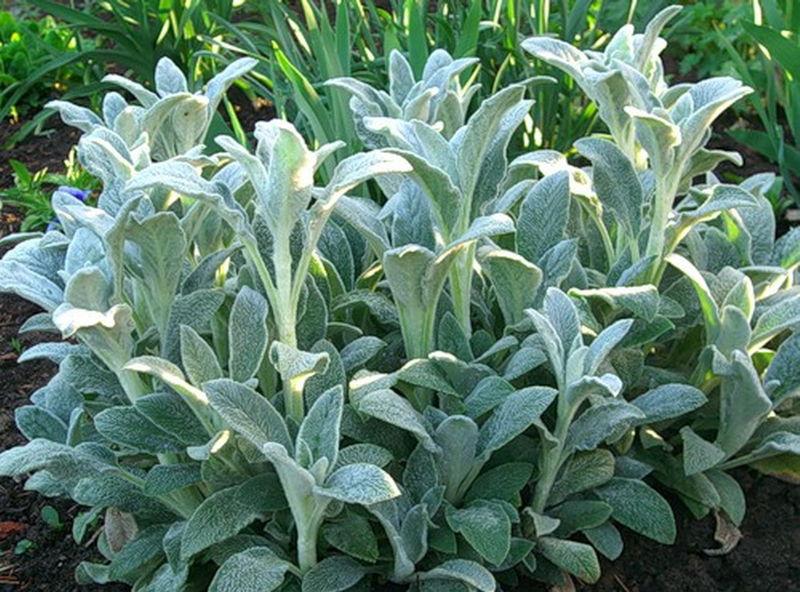
Using
The purist is widely used for the purposes of alternative medicine, for garden decoration. An amazing bush grows safely, does not require painstaking care, but gives a lot of benefits.
Healing properties
The purist has a hypotensive, analgesic, cardiotonic effect on the human body. The plant stimulates contractions of the uterine muscles, is widely used in labor. It also stops bleeding. To lower blood pressure or reduce tachycardia, they resort to dry extract, decoction or tincture of purée. Broths help with colic, stomach cramps, colds, tuberculosis.
Alcoholic infusions are effective in the case of disorders and pathology of the nervous system.
Lotions from a decoction of purée are effective in case of eczema, mastopathy, scrofula. Medical fees are sometimes used for epilepsy, hysteria.
Garden decoration
The scrub is widely used to decorate the suburban area. Plants are placed on an alpine hill, in rockeries, flower beds. Culture looks harmonious on curbs, intersections of garden paths, near stones. In rockeries or an alpine slide, due to the woolly chisel, they fill in the gaps. It goes well with other flowers of different colors. They also use a purist in floristry to create a base for winter bouquets.

Reviews
Gardeners' responses to the woolly cleaner are given below. They will help make sure that it is worth growing.
Natalya Krapivina, 69 years old, Rivne
Greetings to all! I have been growing Primrose Heron in my garden for 4 years. Blooming always creates an energetic atmosphere in the garden.Care is not difficult, I water the bushes once a week. I recommend to everyone!
Rostislav Lapin, 54 years old, Moscow
Hello! The opinion about the cleanser is positive, I have been growing the culture in the country for more than 10 years. I grow Byzantine and Silky Fleece varieties.
Lyubov Nesterova, 60 years old, Kiev
Hello! A neighbor shared the seedlings of the chitose, now it is one of my favorite plants in the garden. I grow without problems, the care is standard.
